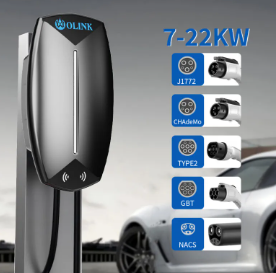As electric vehicles (EVs) continue to revolutionize transportation, the demand for faster, more efficient charging solutions grows. But while public DC fast chargers promise rapid power-ups in minutes, the prospect of bringing this technology home remains elusive. What makes DC fast charging so different? This article explores the hidden challenges and solutions.
What Is DC Fast Charging?
Direct current (DC) fast charging—also known as Level 3—is distinguished by its ability to bypass the vehicle’s onboard AC-to-DC converter, delivering DC power straight to the battery at rates up to several hundred kilowatts.
By comparison, Level 1 chargers use a standard 120 V AC outlet and add roughly 2–5 miles (1 mile ≈1.6 kilometers) of range per hour, while Level 2 chargers use 240 V AC and can supply around 10–30 miles per hour.
AC vs. DC in EV Charging
AC supply: Delivered by the electrical grid; easily transported over long distances but need be converted onboard to DC.
DC fast charging: The external charger contains a large AC-to-DC converter, so power goes directly to the battery without onboard conversion delays.
Why Home Installation Isn’t Feasible
Grid connection limits
Most homes have single or split phase AC service (120/240 V) and lack the three‑phase, high‑amp supply (often 480 V or higher) that DC fast chargers require.
Infrastructure and cost
Adding the necessary transformers, switchgear, cooling, and safety systems often exceeds $50,000 and can take months of permitting and construction.
Maintenance and safety
DC fast chargers must meet stringent fire, shock, and thermal‑management standards and require certified technicians for upkeep—unlike simpler Level 2 home units.
Practical Home Charging Alternatives
Level 2 charger installation
Home 240 V chargers can fully replenish EV overnight.
Priority policy for individual users Federal tax credit IRA (Family Reduction Expenses): Individuals who install charging piles can enjoy a 30% tax credit, up to $1,000 (including equipment and installation costs), until 2032.)(For specific policies, need refer to government documents)
Applicable conditions: The charging pile must meet safety standards and be installed in a family residence)

Time‑of‑use energy management
Charging during off-peak hours (e.g., overnight) can capitalize on lower electricity rates and reduce strain on the grid.
Battery‑backed or solar‑paired setups
Some homeowners integrate home batteries or solar arrays to smooth demand and further lower charging costs.
Locating Public DC Fast Chargers
When rapid charging is needed, public networks offer Level 3 stations at:
Highway rest areas and travel plazas
Retail and grocery parking lots
Dedicated charging hubs in urban districts
Most charge by the kilowatt‑hour at rates between $0.40 and $0.60/kWh.
Looking Ahead: Evolving Home Charging
Emerging standards (e.g., NACS/V4) and modular power electronics may one day shrink DC fast chargers and enable lower‑power residential versions.
Meanwhile, vehicle‑to‑grid (V2G) and smart‑charging platforms promise to make home EV charging more sustainable and grid‑friendly, even without full Level 3 speeds.
By strategically pairing overnight Level 2 home charging with targeted use of public DC fast chargers—while optimizing for off-peak electricity rates and renewable energy integration—you can fulfill daily driving requirements cost-effectively, safely, and with a significantly reduced carbon footprint.
YouTube : https://www.youtube.com/@olinkevse
OLINK : https://olinkevse.com/

